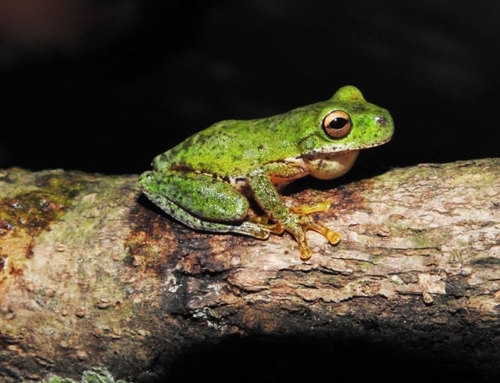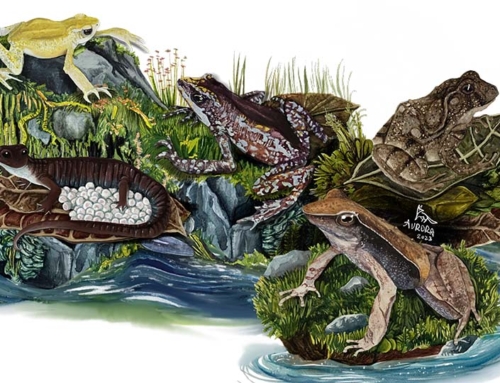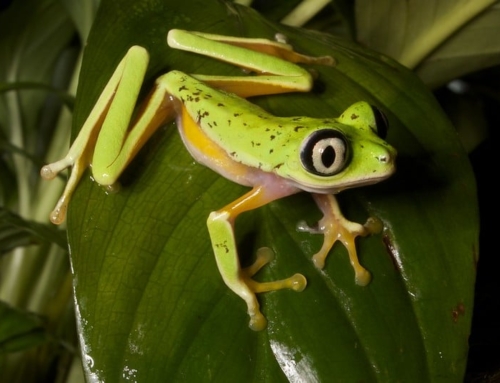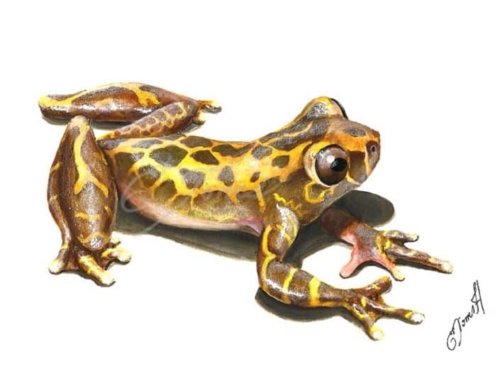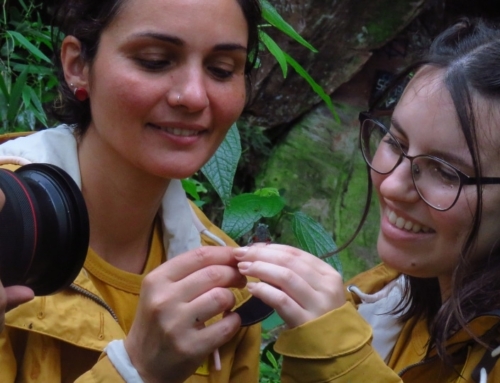Amphibians occupy a complex place in cultures around the world. Throughout history, these vibrant, shape-shifting creatures of land and water have been met with both wonder and hostility.
In the final part of this series Amphibians and Culture, Senior Programme Officer Pria Ghosh discusses how strong feelings about amphibians—both positive and negative—shape amphibian conservation in South Africa and India. In these two countries, both scarred by European colonialism, our partners work to dispel myths, but also to protect and revive more positive cultural narratives about amphibians.
An increasingly divided view of amphibians is developing throughout the world. As we discussed in our previous blog, while many Indigenous Peoples of South and Central America revere amphibians, urban populations increasingly view them with fear and suspicion.
South Africa: how Indigenous cultures and colonialism shape feelings about frogs
A similar dynamic is also playing out in other regions, including South Africa. Here, Dr Fortunate Phaka, an ‘ethnoherpetologist’—someone who studies the relationship between amphibian biology and culture—records (and works to revive) Indigenous names and stories about native amphibians and reptiles. Through his research, he hopes to show that traditional cultural practices can benefit species conservation.
Fortunate has observed an almost universal perception in South Africa that frogs are poisonous – and also that touching one will give you warts. As a result, frogs are persecuted and often killed on sight.
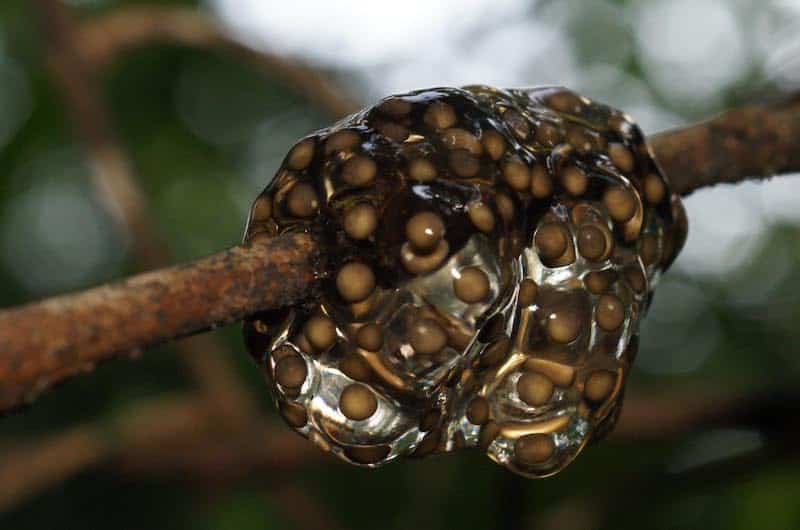
Eggs laid by a kloof frog, an Endangered South African species that is the only member of its genus, making it an especially unique aspect of earth’s biodiversity. Image: © Endangered Wildlife Trust.
However, in some Indigenous cultures, frogs are protected and killing them is taboo. They may associate frogs with visits from ancestors, or see them as valuable rainmakers and so have strong positive associations. The Vhenda consider them integral parts of sacred waterbodies, and cave paintings by the Khoi-San suggest that Xenopus species were once considered a symbol of fertility.
Several studies have investigated why most South Africans have such negative associations with amphibians when there are rich, ancient, and positive cultural associations to draw on. One very likely possibility is that Europeans imported their belief that frogs were a symbol of poison and witchcraft with them during colonisation.
Synchronicity Earth’s partner Endangered Wildlife Trust seeks to address these attitudes and introduce people of all ages to the wonderful world of amphibians through their annual ‘“Leap Day for Frogs’”, which aims to highlight the plight of amphibians and generate appreciation of them.
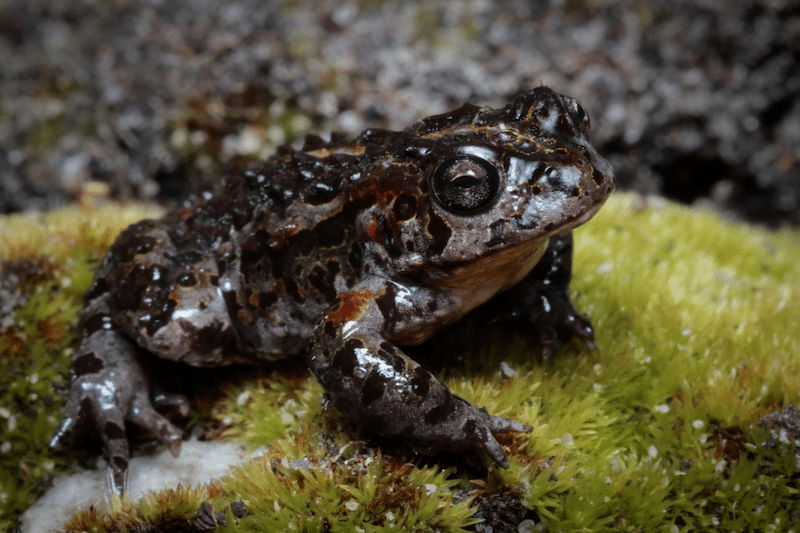
The moonlight mountain toadlet is one of the many beautiful amphibian species EWT is working to protect. Image © Keir Lynch.
Last year, to gather more of these fascinating cultural associations with frogs, they coordinated a social media campaign #FrogLore, which reached over 34,000 people, and triggered wonderful story-sharing – including one of frogs shooting lightning from their mouths! Although this story might sound outlandish, it’s likely inspired by the lightning speed of frogs’ long tongues.
Talisman and delicacy: the important cultural role of frogs in India
Across the ocean, in India, we haven’t heard stories of amphibians with storms in their mouths, but the group are almost universally associated with dangerous, stormy weather.
In ancient times, frogs were likely associated with beauty, aspiration, and wisdom. They feature widely in Sanskrit texts and the Vedas. For example, one Vedic text known as the Mandukya Upanishad, or ‘“Frog Doctrine’”, tells the reader to leap like a frog into a higher state of awareness. In the ancient Sanskrit epic the Rāmāyana, the demon Ravana’s wife is described as a great beauty, and her name, Mandodari, means ‘woman with the belly of a frog’ – slim and pale. In some versions of the story, Mandodari began life as a frog but was turned into a beautiful princess.
Eating amphibians is now rare in India, but in the Western Ghats, an amphibian biodiversity hotspot, the Nadukani-Moolmattom-Kulamaav tribal people harvest the pig-nose purple frogs and their tadpoles as a delicacy. The pig-nosed purple frog is a mysterious creature, spending almost its entire life underground and only emerging in the monsoon rains to breed. As a result, the species is associated with thunder and lightning – to the extent that adult frogs are sometimes killed and preserved to be made into an amulet said to protect children scared by the storms.
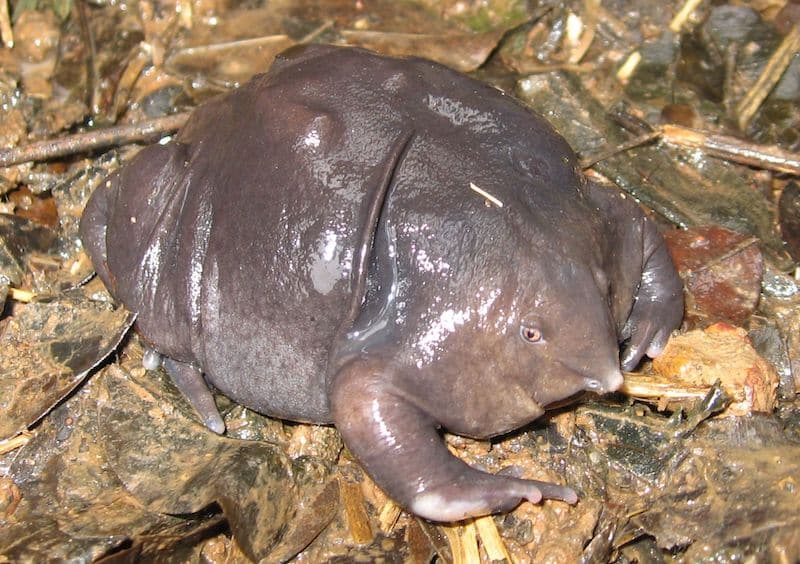
The pig-nosed purple frog’s unusual appearance speaks to its unique genetics—the species has no close relatives. Image: Karthickbala at ta.wikipedia CC-BY-SA-3.0
Across India, there is astonishing variation in attitudes towards amphibians. In some regions, frogs are associated with tantra and dark magic, and in Kerala it is said that if a pregnant woman sees a green frog, she has a high chance of miscarrying. However, in nearby Karnataka, it is thought that if a pregnant woman comes across a tree frog, she will be guaranteed a smooth pregnancy.
Today, Sethu Parvathy and the Wildlife Trust of India are battling a curious myth around the town of Munnar: that frogs eat cardamom, which is a major crop in the area. This is a strongly held and widespread belief, with many plantations hiring people to hunt and kill frogs. Along with encouraging frog– friendly practices on plantations, Sethu has been running education projects to explain that frogs do not eat cardamom, and can actually help to reduce other pests by eating insects.
Recognising the relationship between amphibians and weather
As in Central and South America, many communities in India associate frogs with rain. In some Indian states, the association between amphibians and rain is so strong that it is believed drought can be broken by marrying two frogs. In fact, in 2019, this ritual appeared to work so well in one village that the rains were dangerously torrential – and the decision was taken to divorce the frogs as an antidote!
Frogs’ association with rain also has deeply practical uses. As part of her work for Wildlife Trust of India, Sethu draws on knowledge passed down through the generations. Her grandmother claimed she could tell the type of rain that would be coming that day, and where it would be on their land, by listening to the calls of local frogs.
Over the years, Sethu realised she was right, and has picked up some of her grandmother’s skill – if the bush frogs are calling, you can expect drizzle, whereas a bullfrog calling means imminent thunder. Sethu now uses this skill to help her in the field – a modern application of traditional knowledge.
Across the world, amphibians’ life cycles track the weather upon which so much of humanity’s existence depends. The ubiquity of frogs makes them fantastic indicators of both times of plenty and impending natural disasters, depending on where you happen to be in the world. Their ability to cross boundaries and change form has captured people’s imaginations for generations.
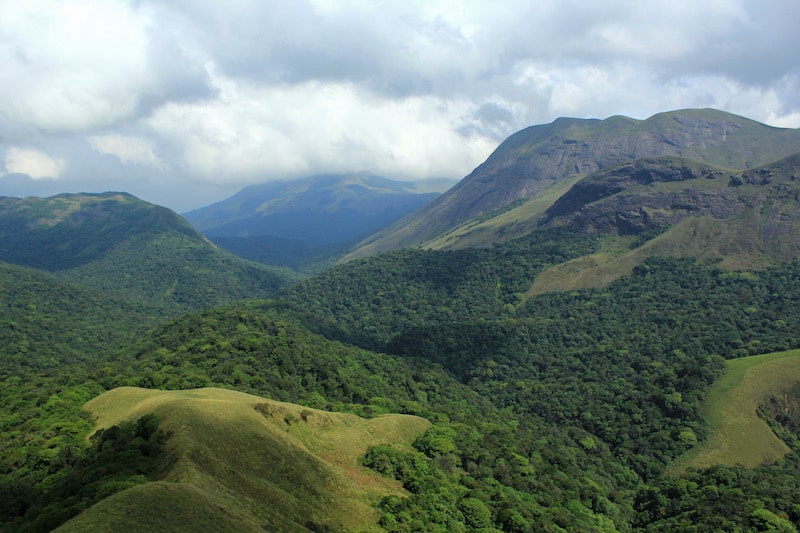
Shola forest-grassland, mosaic ecosystems made up of high-altitude tropical forest separated by lush grassland, are found only in India’s Western Ghats. They are crucial amphibian habitat. Image © Renjith Hadlee.
Often on the Amphibian Programme, we hear the idea that frogs simply can’t capture the public imagination, that they don’t inspire and so they’re harder to save. A cursory look across world history shows that this simply has not always been the case, and it does not have to be the case now. Thanks to Synchronicity Earth’s Amphibian partners, and so many others, this fascinating knowledge and rich cultural history can be saved and revived, along with the species themselves.
The close relationships between people and amphibians echoes the central role of culture plays in all good conservation work. Our Biocultural Diversity Programme treats biodiversity and cultural diversity as two sides of the same coin, recognising that ecosystems thrive when the rights of Indigenous Peoples and local communities are protected.
Conversely, the legacy of colonisation, and the spread of systems that prioritise profit over people and planet, disconnect us from our ecosystems and local species—as we’ve seen several times throughout this series. By telling different stories about humanity’s place on the planet and the species we share it with, we can begin to build a different future for all life on earth.
This blog was made possible through the insights, stories, and edits shared by our partners Dr. Fortunate Phaka, the Endangered Wildlife Trust, and the Wildlife Trust of India.

